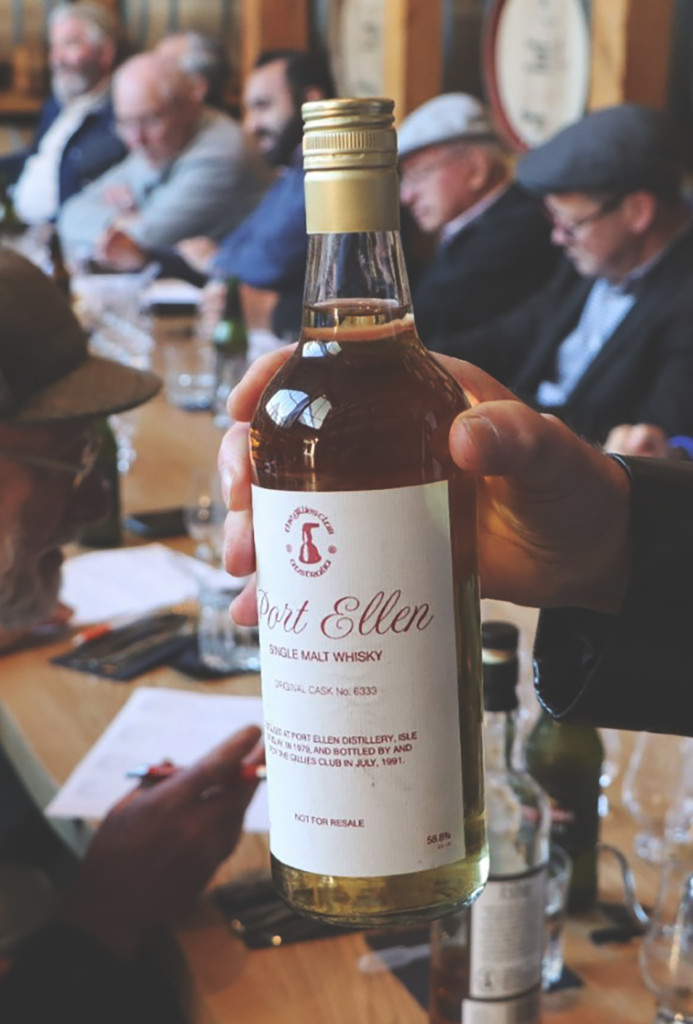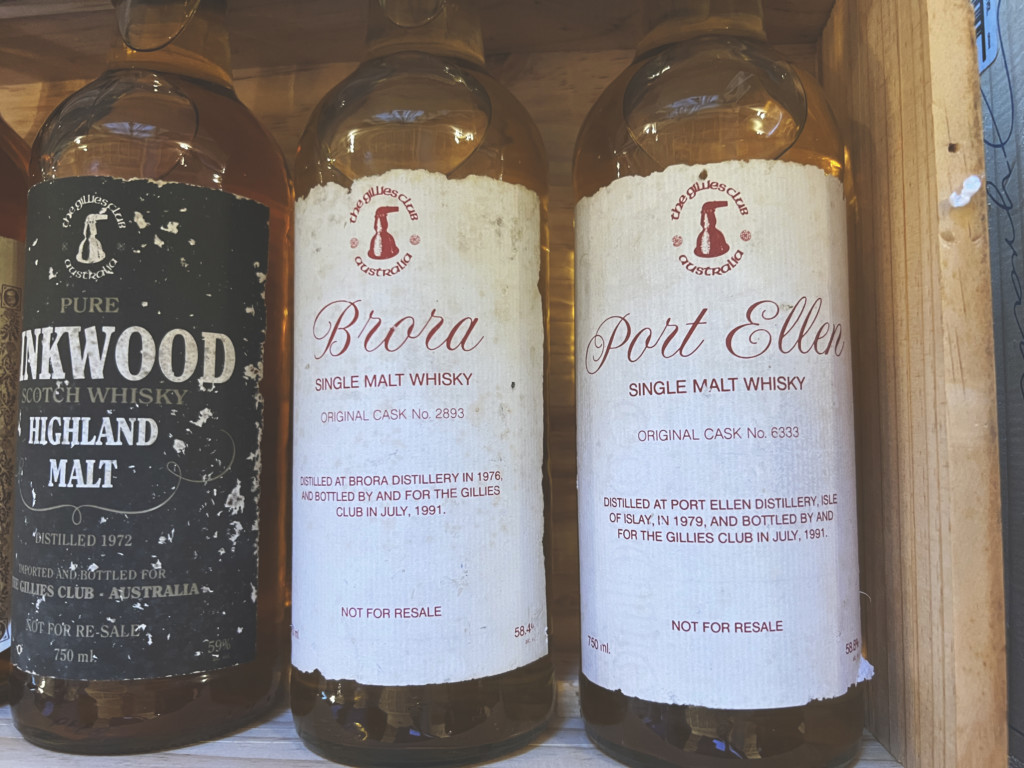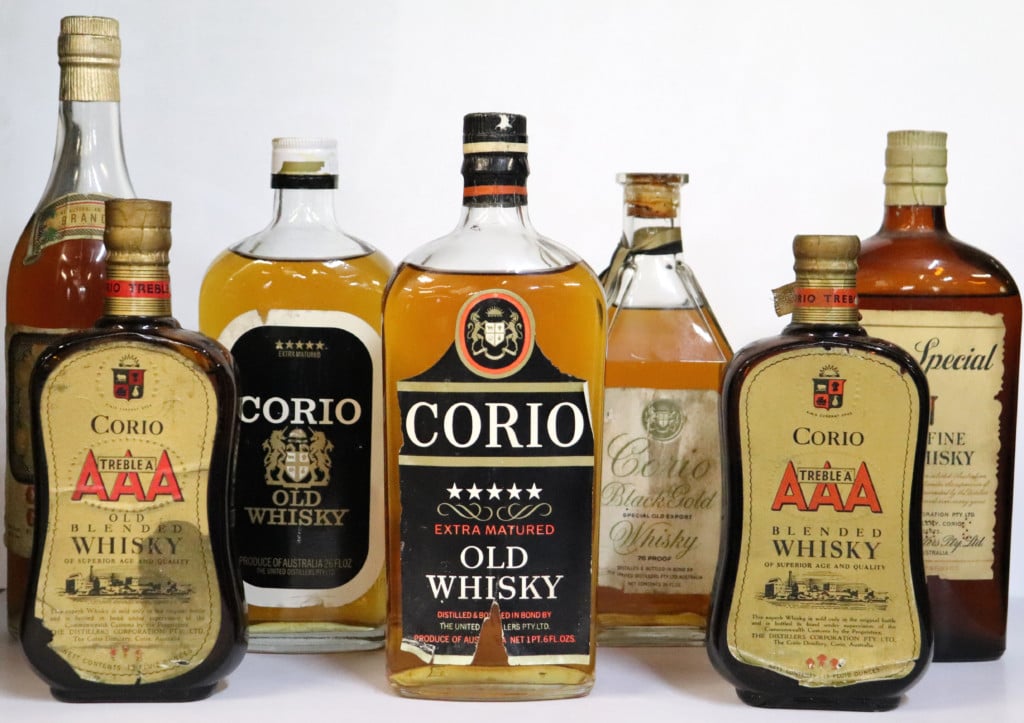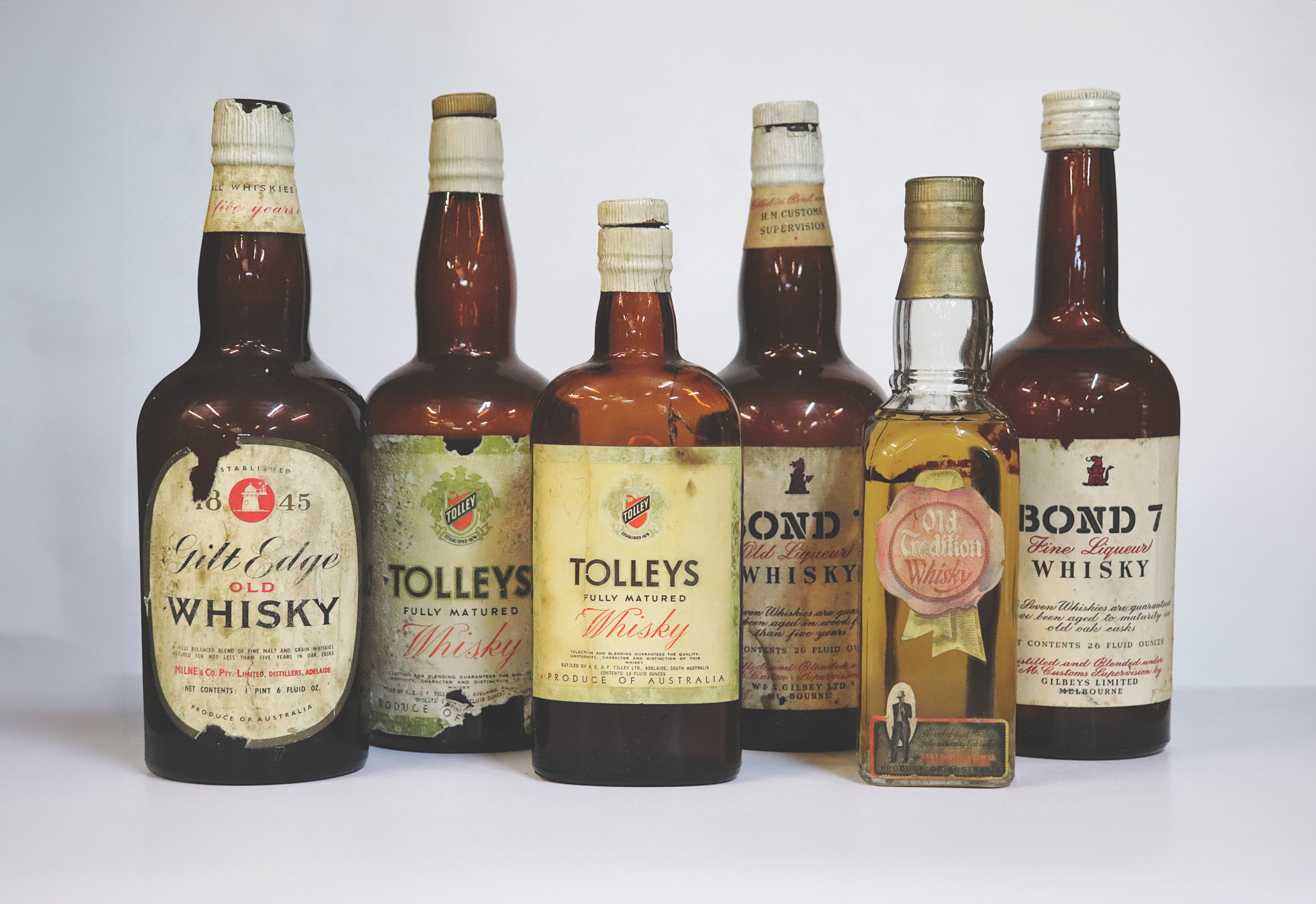November Outturn 2023 Feature Article By Luke McCarthy
In the early 1980s, Australia was like a giant, sun-drenched playground for the senses. It was a time of perms and mullets and paisley shirts, shoulder pads, power suits and shrimps on the barbie. It was a time when fruity rieslings were kicked to the curb by bold and buttery chardonnays. Australian wine was about to launch its ‘bottled sunshine’ onto the international stage, while local shiraz and cabernet were wooing fine wine fanciers at home and abroad.
On the other hand, if you were a malt whisky lover in Australia in the early 1980s, you were living in a barren, drab, wasteland of a place.
“The world was a blended whisky world then,” recalls Bruce Ferrier, a veteran radio announcer who first got into malt whisky in the early 1980s. Ferrier is also The Laird of The Gillies Club, Australia’s, and possibly the world’s, first single malt whisky appreciation society. It was founded in February 1977, just a few years before the groundbreaking formation of The Scotch Malt Whisky Society, at a time when finding quality malt whisky was nowhere near as simple at it is today.

Port Ellen bottling imported by Gillies club
“All that was around in Australia was the likes of Glenlivet and Glenfiddich and that’s about it. It was a terrible selection as far as general retail was concerned,” Ferrier says.
Alongside the woeful Scottish single malt offering then, Australian-made whisky was also in its death throes. Malt whisky making had flourished in Australia since the late 1800s. But after World War II, the international conglomerates like Distillers Company Ltd (DCL) that controlled the major Australian whisky producers had shifted the industry to blends. In the 1970s, Australian import tariffs were then removed and excise duties increased. The writing was on the wall for the rudderless local distillers.
“That was when the original Australian whisky industry died,” says Adelaide-based publican and whisky importer David Le Cornu. “I started in the industry in the 1960s, so I remember when you came into a hotel and asked for a whisky, you got Australian whisky. You had to pay two cents extra to get a Scotch. And then they changed the tax regime in the late 1970s and it just went dead.”
Le Cornu opened the Earl of Zetland pub in the early 1980s and turned it into a specialist malt whisky bar, eventually amassing a collection of over 360 malts.
“I found that the only spirit that had enough character for getting interested in was malt whisky,” says Le Cornu.
“I tried to have the biggest range of malt whiskies available by the nip in the world. I never heard of anyone who had a better one then. In those days, you could chase up virtually all the malts that existed in the world. Whereas today, it would be an impossible task.”
By that stage in the mid-1980s, a small group of Australian malt whisky enthusiasts had banded together through various specialist retailers and clubs. Gillies founders Dr Peter Boon and Norman Case gave their blessing to the establishment of other club branches in towns and cities across the country, with Le Cornu establishing one of the earliest in Adelaide.
Norman Case soon became the largest specialist importer of malt whisky in Australia. Like Le Cornu, Case started selecting and bringing in whole casks of Scottish malt whisky for his customer base. The most famous cask from this era even inspired the Black Bowmore, as Ferrier fondly recounts.
“When the Gillies members got to try their very first full cask import, it was a Bowmore, which happened to be distilled in 1964. Everybody was stunned at the colour of it, and so they named it the ‘Black Bowmore’. It was a 17 year old then. A piece of absolute magic.”

Early Gillies Club Bottlings
Bowmore’s owners remembered this Gillies Club nickname when they eventually released an official Black Bowmore in 1993 as a 29 year old. A further four ‘Black Bowmore’ bottlings were released by the distillery over a two-decade period, evolving into one of Scottish whisky’s legendary collections.
“It was there. There was definitely a scene then, it just didn’t have as much enthusiasm and size as the boom of the late 1990s.” Graham Wright, founder of online retailer The Odd Whisky Coy, vividly remembers these various strands of malt whisky mania coming together in the 1980s. Wright started at university in Melbourne in 1981 and quickly fell in a with band of malt whisky devotees.
“My dad was drinking Corio at that stage and other Australian blends like Gilt Edge, so those cheaper brands predominantly. But when I went to university, I ended up meeting with a group of people that saw whisky, and saw malt whisky in particular, as something quite special. We had gatherings and various events and we’d go out and hunt down what was available in the Melbourne market.”
The Corio Distillery, originally built by Distillers Company west of Melbourne, was being dismantled, like much of the industry, at the same time Wright’s career in wine and spirit retailing was kicking off.

“From the Melbourne perspective, it was an interesting scene. In 1983, we famously had a whole heap of colleagues come in from interstate and we did a whisky tasting and put on a big bash. We would have had 20-odd bottles of malt whisky opened, mainly DCL products. At that stage, that was basically all you could get.”
While blended Scotch whisky was still far and away the dominant article in Australia, change was on the horizon. A number of industry leaders saw malt whisky starting to gather momentum. Even those who’d been working to promulgate Scottish blends in Australia for decades recognised this quiet but growing fascination with malt whisky.
“Premiumisation was starting to take place across the whisky and spirits industry in the 1980s and I think that was definitely a part of it,” says Rob Hirst, the chairman of Tucker Seabrook.
Originally the wine and spirit merchant Tucker & Co, founded in Sydney in 1838, Tucker Seabrook first started distributing Scotch whisky in Australia way back in the 1840s. In the 1920s, Hirst’s family also started working with Teacher’s to distribute their popular Highland Cream blend. A prosperous partnership developed between the companies for several decades.
“Teacher’s had a higher percentage of malt whisky — most prominently Glendronach and Ardmore — than other blends, and it was just a fascinating story,” says Hirst. “There were some enlightened people at the helm then who saw the future there with malt whiskies and they wanted to be a part of that premiumisation. I’d like to think that the Keepers of the Quaich had something to do with that as well.”
Hirst was the very first Australian Keeper of the Quaich, inducted at the inaugural ceremony in 1988. His wife Judy was also the first Australian woman to be inducted into the Keepers — she was one of the first women to start writing articles about Scotch whisky and the emerging malt whisky trail back then.
Now a Master of the Quaich and one of the Australian wine industry’s most respected figures, Hirst has long been involved in education through the Wine & Spirit Education Trust (WSET). Over his nearly 50 years in the industry, he firmly believes that the sharing of passion and knowledge that malt whisky seems to cultivate more so than any other spirit has been one of the key drivers in its continued success.
“We’ve always been great advocates for treating Scotch whisky with the respect it deserves. But there’s no point having the finest products if we don’t also have the best educated trade and consumers to enjoy them.”
Fast forward to today, where specialist malt whisky retailers, bars and distilleries can be found in every Australian city, and it’s easy to forget that it wasn’t always this way. A determined group of enthusiasts blazed the trail, some of them among the most forward-thinking in the malt whisky world for their time. And while there are plenty of things from the 1980s we’d often prefer to forget, the efforts of these whisky pioneers are definitely worth toasting and remembering.
This article is featured in November 2023 Outturn — bottles will be available to purchase on Friday the 17th of November at midday AEDT exclusively to members of The Scotch Malt Whisky Society. Not a member? Click here to learn more about the world’s most colourful whisky club.








